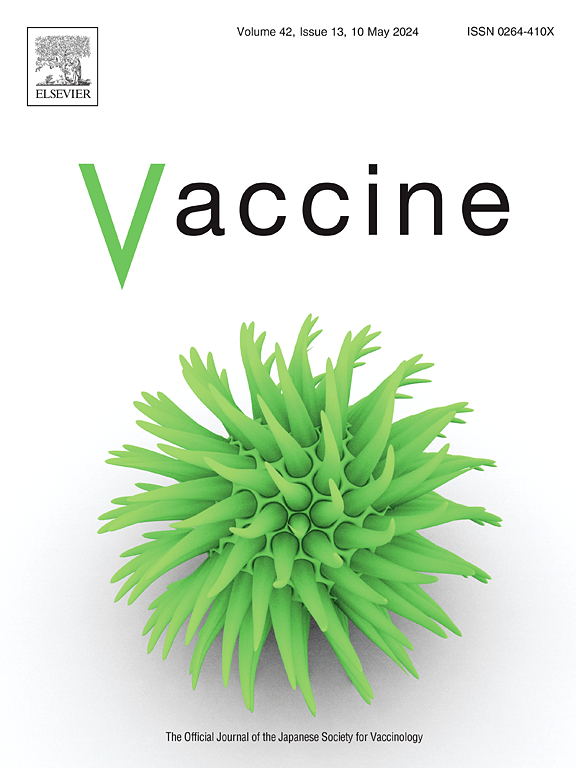Receipt of respiratory vaccines among patients with heart failure in a multicenter health system registry
IF 4.5
3区 医学
Q2 IMMUNOLOGY
引用次数: 0
Abstract
Background
Heart failure affects people of all ages and is a leading cause of death for both men and women in most racial and ethnic groups in the United States. Infections are common causes of hospitalizations in heart failure, with respiratory infections as the most frequent diagnosis. Vaccinations provide significant protection against preventable respiratory infections. Despite being an easily accessible intervention, prior studies suggest vaccines are underused in patients with heart failure.
Methods
An observational study of 5089 adults with heart failure was conducted using data from an integrated, multicenter, academic health system in Southern California from 2019 to 2022. Logistic regression models were used to determine the rates of influenza, pneumococcal, and COVID-19 vaccination among a population of patients with heart failure (heart failure preserved ejection fraction [HFpEF], heart failure mildly reduced ejection fraction [HFmrEF], and heart failure reduced ejection fraction [HFrEF], and identify whether heart failure phenotype is associated with vaccination status.
Results
Vaccination rates varied between influenza, pneumococcal, and COVID-19 vaccines. Of the three respiratory vaccines, 58.0 % of patients had received an influenza vaccine, 76.2 % had received a pneumococcal vaccine, and 83.3 % had received a COVID-19 vaccine. There were no sex-based differences by vaccination status. Differences were seen within age, race/ethnicity, insurance type, whether the patient was a member of an Accountable Care Organization (ACO), primary language, Social Vulnerability Index (SVI) score, clinician type, and number of comorbidities. Patients with HFpEF and HFmrEF had higher vaccination rates than HFrEF. In adjusted models, patients with HFrEF had lower odds of being vaccinated for influenza (aOR = 0.75, 95 % CI = 0.66–0.86), pneumococcal (aOR = 0.65, 95 % CI = 0.55–0.75), and COVID (aOR = 0.74, 95 % CI = 0.62–0.89) compared to patients with HFpEF.
Conclusions
Patients with HFrEF had the lowest levels of respiratory vaccination compared to other specified heart failure categories. Interventions are needed to increase vaccination education and offerings, especially to patients with HFrEF.
多中心卫生系统登记中心力衰竭患者呼吸道疫苗的接受情况。
背景:心力衰竭影响所有年龄段的人,是美国大多数种族和族裔群体中男性和女性死亡的主要原因。感染是心力衰竭住院的常见原因,呼吸道感染是最常见的诊断。接种疫苗可有效预防可预防的呼吸道感染。尽管疫苗是一种容易获得的干预措施,但先前的研究表明,疫苗在心力衰竭患者中的应用不足。方法:使用2019年至2022年南加州综合多中心学术卫生系统的数据,对5089名心力衰竭成人进行观察性研究。采用Logistic回归模型确定心力衰竭患者(心力衰竭保留射血分数[HFpEF]、心力衰竭轻度降低射血分数[HFmrEF]和心力衰竭降低射血分数[HFrEF])的流感、肺炎球菌和COVID-19疫苗接种率,并确定心力衰竭表型是否与疫苗接种状况相关。结果:流感疫苗、肺炎球菌疫苗和COVID-19疫苗的接种率存在差异。在这三种呼吸道疫苗中,58.0%的患者接种了流感疫苗,76.2%的患者接种了肺炎球菌疫苗,83.3%的患者接种了COVID-19疫苗。疫苗接种状况没有性别差异。在年龄、种族/民族、保险类型、患者是否是负责任医疗组织(ACO)的成员、主要语言、社会脆弱性指数(SVI)评分、临床医生类型和合并症数量等方面都存在差异。HFpEF和HFmrEF患者的疫苗接种率高于HFrEF。在调整后的模型中,与HFpEF患者相比,HFrEF患者接种流感(aOR = 0.75, 95% CI = 0.66-0.86)、肺炎球菌(aOR = 0.65, 95% CI = 0.55-0.75)和COVID (aOR = 0.74, 95% CI = 0.62-0.89)疫苗的几率较低。结论:与其他特定心力衰竭类别相比,HFrEF患者的呼吸系统疫苗接种水平最低。需要采取干预措施,增加疫苗接种教育和提供,特别是对HFrEF患者。
本文章由计算机程序翻译,如有差异,请以英文原文为准。
求助全文
约1分钟内获得全文
求助全文
来源期刊

Vaccine
医学-免疫学
CiteScore
8.70
自引率
5.50%
发文量
992
审稿时长
131 days
期刊介绍:
Vaccine is unique in publishing the highest quality science across all disciplines relevant to the field of vaccinology - all original article submissions across basic and clinical research, vaccine manufacturing, history, public policy, behavioral science and ethics, social sciences, safety, and many other related areas are welcomed. The submission categories as given in the Guide for Authors indicate where we receive the most papers. Papers outside these major areas are also welcome and authors are encouraged to contact us with specific questions.
 求助内容:
求助内容: 应助结果提醒方式:
应助结果提醒方式:


